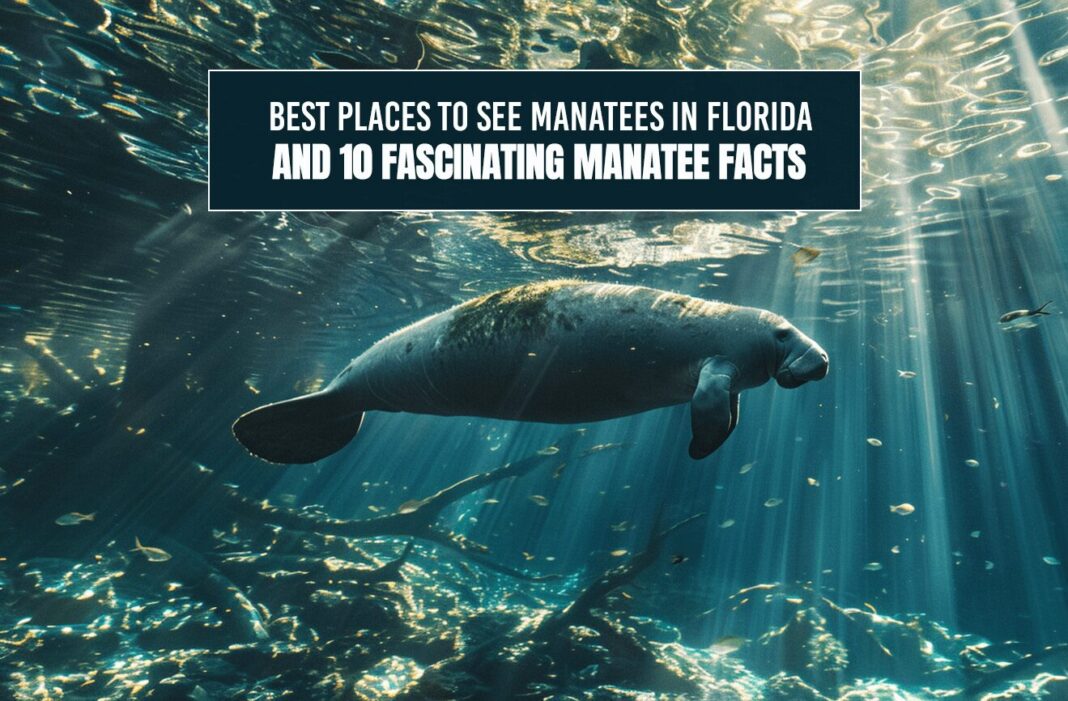Florida’s waters are home to the West Indian manatee, one of the most unique and beloved marine mammals. These gentle giants, often called “sea cows,” have captured the hearts of locals and visitors alike with their slow, lumbering movements and friendly demeanor.
In this comprehensive guide, we’ll explore the best places to spot manatees in Florida and uncover 10 fascinating facts about these remarkable creatures. Manatee swimming in clear water.
Where to See Manatees in Florida
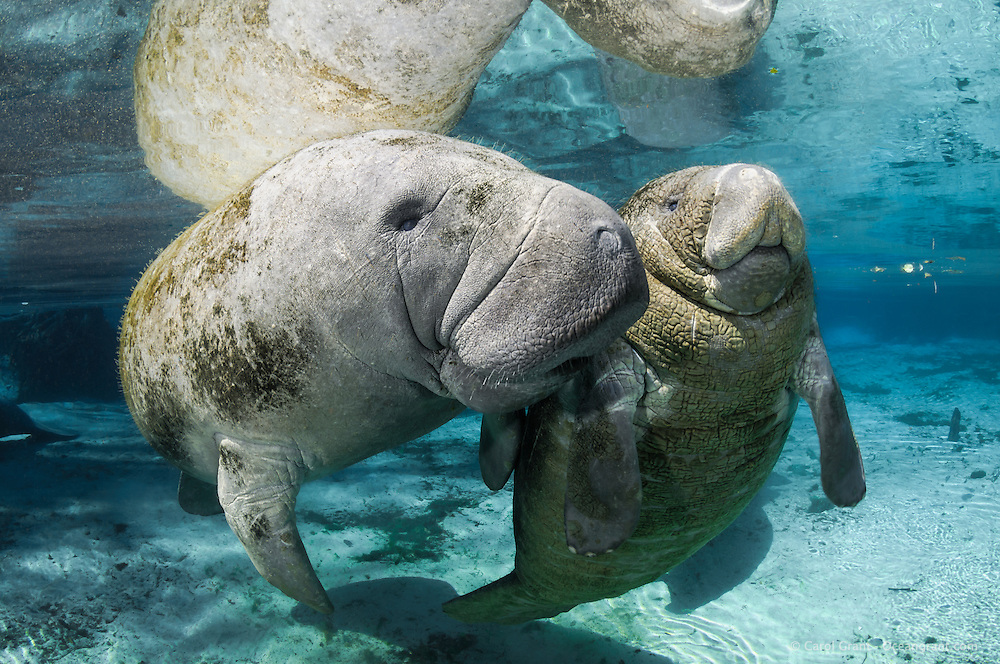
1. Crystal River National Wildlife Refuge
Considered the premier destination for manatee viewing, Crystal River National Wildlife Refuge is a must-visit for any manatee enthusiast.
The warm, spring-fed waters of Kings Bay and Three Sisters Springs attract hundreds of these gentle giants during the winter months, providing a unique opportunity to observe them in their natural habitat.
Visitors can view manatees from boardwalks, take guided boat tours, or even swim with them by participating in snorkeling or guided in-water tours (with strict regulations in place to protect the animals). The refuge also offers educational programs and exhibits to learn more about manatee conservation efforts.
2. Homosassa Springs Wildlife State Park
Located near Crystal River, Homosassa Springs Wildlife State Park is another prime spot for manatee watching.
For families traveling to Florida, Homosassa Springs Wildlife State Park offers an ideal opportunity to observe manatees in their winter refuge.
The park’s warm spring waters attract these gentle giants, which can be viewed from the underwater observatory or boardwalk trails.
Beyond the park boundaries, guided boat tours and kayak/paddleboard rentals provide additional chances to spot manatees in the surrounding waterways.
The park also showcases a diverse array of wildlife, including alligators, bears, and numerous bird species, making it a comprehensive nature experience for the whole family.
3. Blue Spring State Park
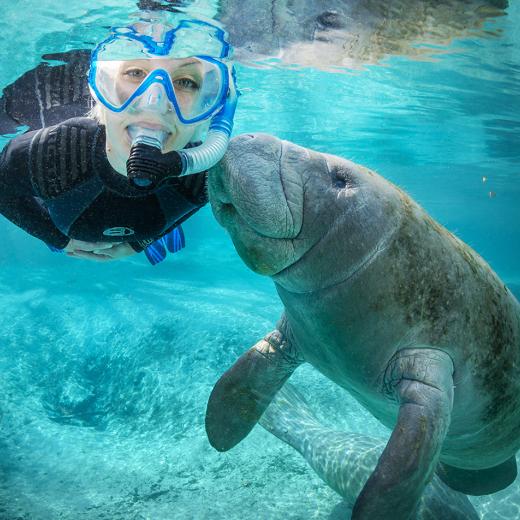 Situated in Orange City, Blue Spring State Park is renowned for its crystal-clear waters and the manatees that seek refuge there during the winter months.
Situated in Orange City, Blue Spring State Park is renowned for its crystal-clear waters and the manatees that seek refuge there during the winter months.
Visitors can observe these gentle giants from the park’s boardwalks or by renting kayaks or canoes to explore the waterways.
The park also offers guided tours and educational programs, providing insights into the lives of manatees and the importance of their conservation.
4. Tampa Electric’s Manatee Viewing Center
For a unique urban manatee viewing experience, head to Tampa Electric’s Manatee Viewing Center in Apollo Beach.
This free viewing center allows visitors to observe manatees congregating in the warm waters discharged from a nearby power plant, particularly during the winter months.
The center features educational exhibits, a gift shop, and a tidal walkway that provides excellent vantage points for spotting these gentle giants.
5. Merritt Island National Wildlife Refuge
Located along the Space Coast, Merritt Island National Wildlife Refuge is another excellent destination for manatee watching.
The refuge’s network of waterways and canals provides a natural habitat for manatees, and visitors can often spot them from the refuge’s observation decks, boardwalks, and hiking trails.
10 Fascinating Manatee Facts
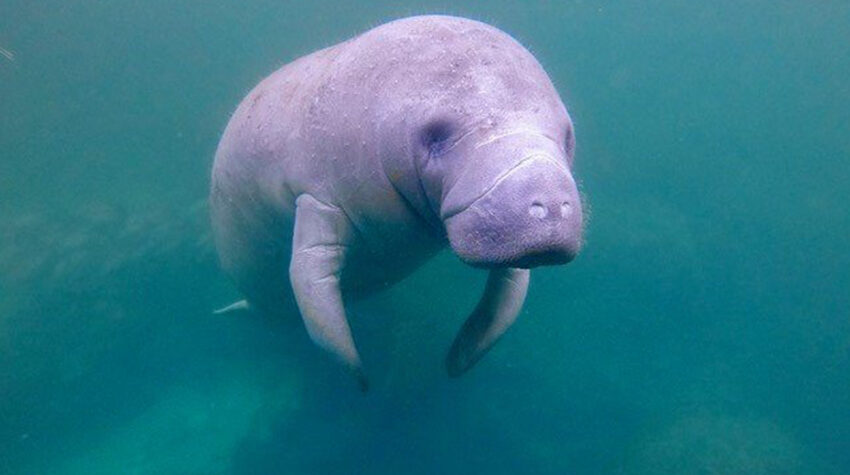
1. Manatees are Distant Relatives of Elephants
Despite their aquatic lifestyle, manatees are actually distant relatives of elephants. Both species belong to the order Sirenia, which includes four species of modern-day sea cows.
Like their elephant cousins, manatees use their muscular upper lips like a trunk to grasp and consume aquatic vegetation.
2. They Cannot Turn Their Heads Sideways
Due to their unique anatomy, manatees possess only six cervical (neck) vertebrae, which limits their ability to turn their heads sideways. Instead, they must rotate their entire body to look behind them or to the sides.
However, this limitation does not hinder their agility in the water, as they can swim upside down, roll, and perform somersaults with ease.
3. Manatees are Intelligent and Have Long-Term Memory
Contrary to their slow and lumbering appearance, manatees are intelligent creatures with remarkable long-term memory.
They have been known to migrate hundreds of miles to the same warm-water refuges year after year, suggesting a strong spatial awareness and memory.
Additionally, manatees in captivity have been trained to respond to visual stimuli and commands, further demonstrating their cognitive abilities.
4. They Can Reach Surprising Speeds
While manatees typically cruise at a leisurely pace of around 5 miles per hour, they are capable of reaching surprising speeds in short bursts.
When necessary, these gentle giants can accelerate to speeds of up to 15 miles per hour, nearly twice as fast as Olympic swimmers.
5. Manatees are Voracious Eaters
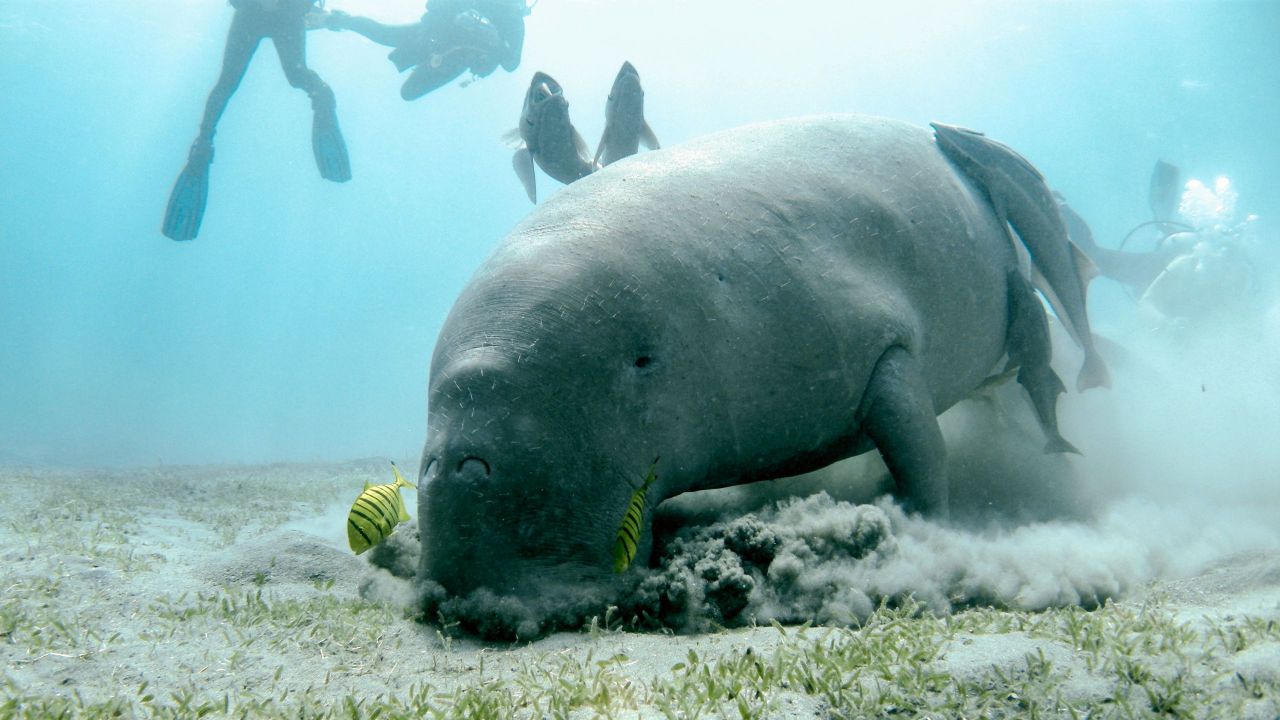
With their massive size, it’s no surprise that manatees have hearty appetites. Adult manatees consume between 4% and 9% of their body weight in aquatic vegetation daily, but they have been known to eat up to 10% of their weight in a single 24-hour period.
This equates to hundreds of pounds of food per day for larger individuals.
6. There Are Three Distinct Manatee Species
While the West Indian manatee is the species found in Florida, there are two other distinct manatee species.
The Amazonian manatee inhabits the Amazon River basin, while the African manatee is found along the west coast and rivers of Africa.
These three species are distinguished primarily by their geographic ranges and slight variations in physical characteristics.
7. Manatees Face Numerous Threats
Despite their protected status, manatees face numerous threats to their survival. Watercraft collisions, entanglement in fishing gear, loss of warm-water habitats, and degradation of their seagrass food sources are among the most significant challenges these gentle giants face.
Conservation efforts and public awareness campaigns play a crucial role in protecting manatee populations.
8. They Can Live Over 65 Years in Captivity
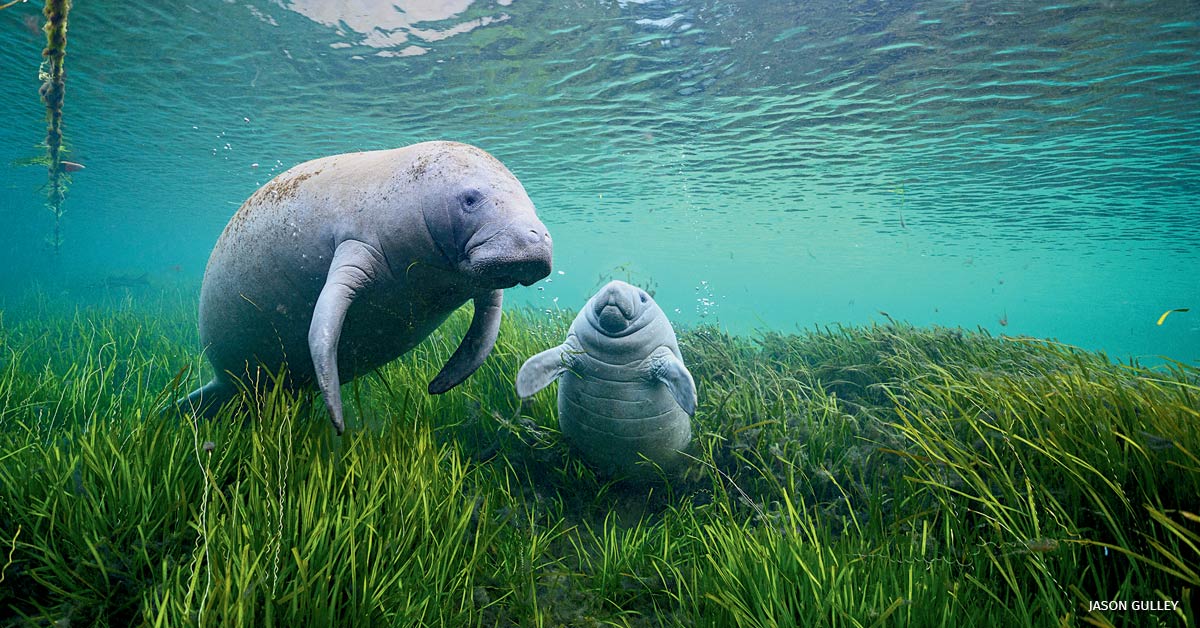
While manatees in the wild typically have a lifespan of around 20 years, those in captive environments can live much longer.
In fact, some manatees have been known to survive for over 65 years in captivity, thanks to the controlled environments and specialized care they receive.
9. Manatees are Aquatic Herbivores
Unlike many other marine mammals, manatees are strictly herbivorous, feeding exclusively on aquatic vegetation such as seagrasses, freshwater plants, and algae.
Their diet plays a crucial role in maintaining healthy ecosystems, as they help control the growth of aquatic plants and contribute to nutrient cycling.
10. Manatees are Protected by Law
Due to their endangered status, manatees are protected by various laws and regulations, including the Endangered Species Act, the Marine Mammal Protection Act, and the Florida Manatee Sanctuary Act.
These laws prohibit harassing, hunting, capturing, or killing manatees, with violations carrying significant civil and criminal penalties.Manatee eating seagrass Observing these gentle giants in their natural habitat is a truly awe-inspiring experience.
By visiting the best manatee viewing locations in Florida and learning about their fascinating traits, we can deepen our appreciation for these remarkable creatures and contribute to their ongoing conservation efforts.
Remember, it is crucial to follow all regulations and respect the manatees’ space when viewing them in the wild. By doing so, we can ensure that future generations will have the opportunity to witness the majesty of these beloved “sea cows.”
